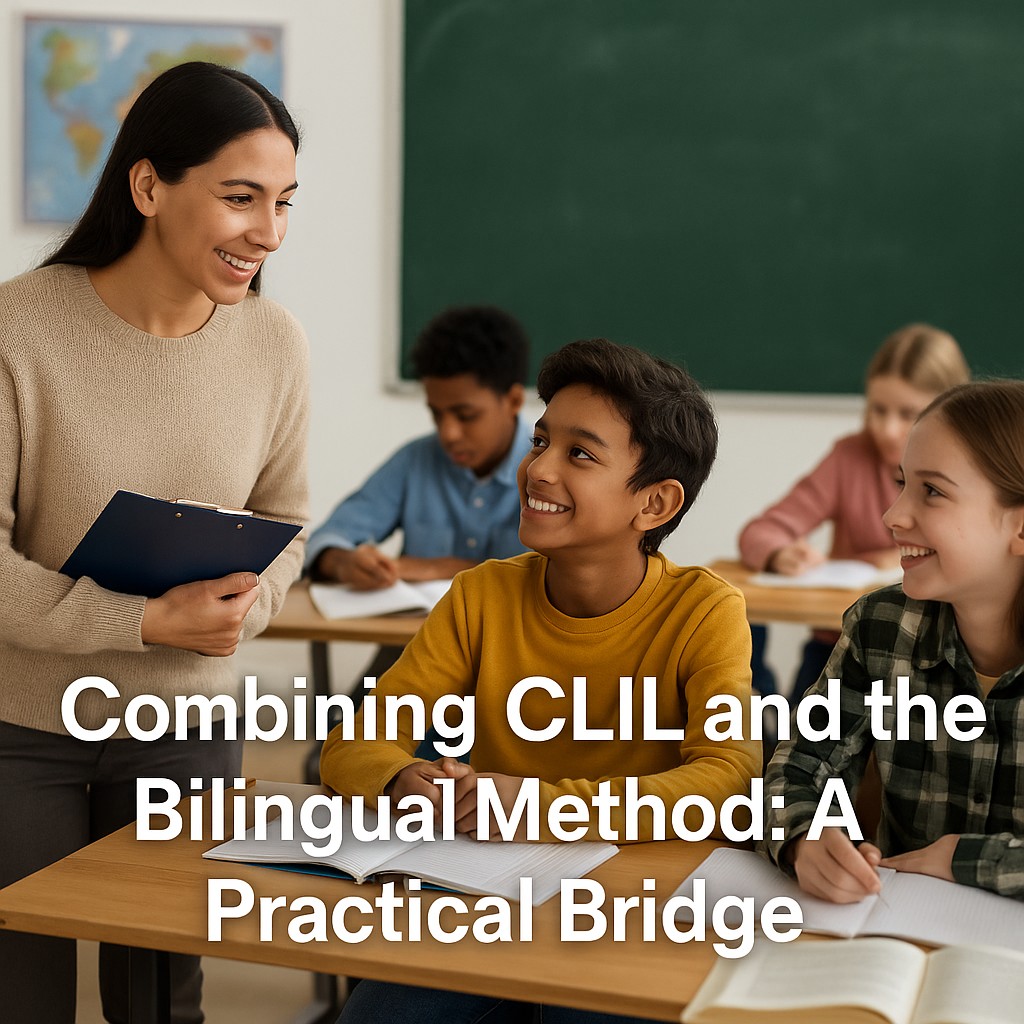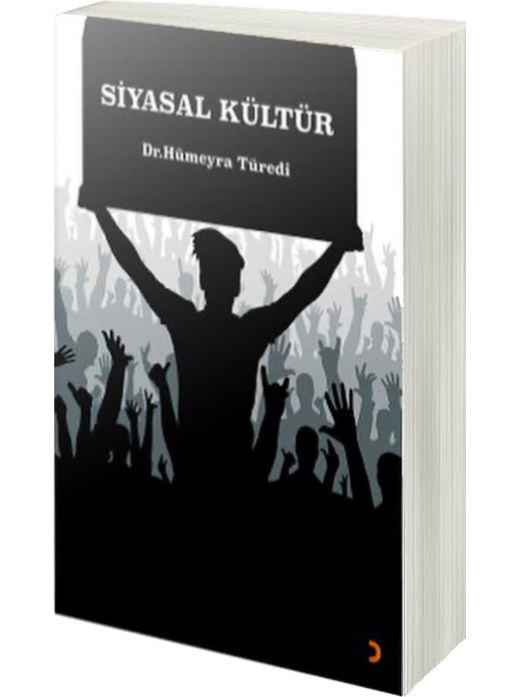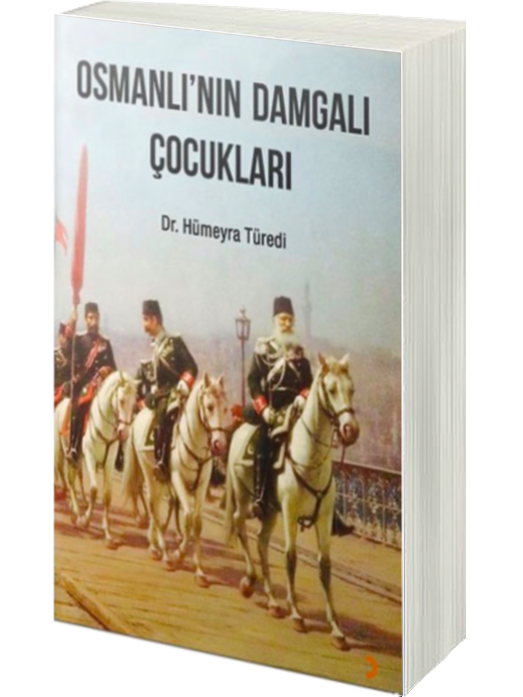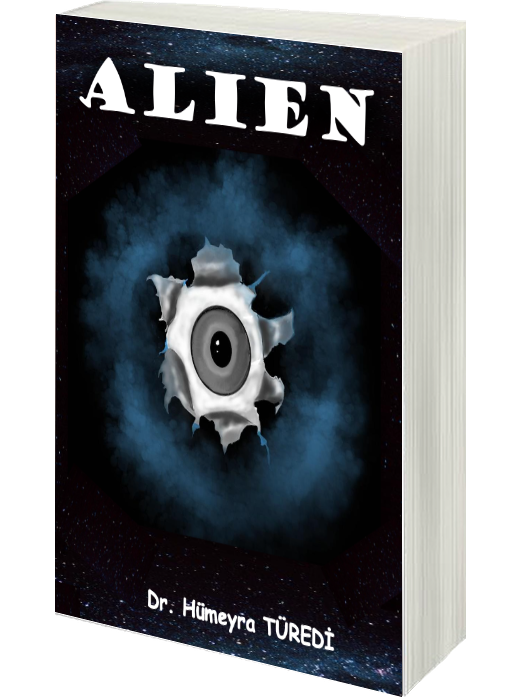
At first glance, CLIL (Content and Language Integrated Learning) and the Bilingual Method might seem like two very different worlds in language education. CLIL focuses on teaching real subject content through the target language, often using full immersion. The Bilingual Method, meanwhile, makes sure students understand quickly by using their first language (L1) as a bridge. But in today’s multilingual classrooms — especially with more refugee learners, mixed-ability groups, and a stronger focus on equity — many teachers and researchers are asking: Can we use both? The answer is increasingly yes — and doing so might actually be one of the smartest ways to make language learning work for everyone.
In theory, the two approaches handle L1 differently. CLIL usually tries to limit or avoid the first language, believing that the more students hear and use L2, the better. The Bilingual Method, on the other hand, sees L1 as a helpful cognitive tool, especially at the beginning. But if you look closely, both share the same goal: helping students understand and use language in real, meaningful ways. CLIL does it through engaging subject content; the Bilingual Method does it through clear explanations and immediate comprehension. From the perspective of scaffolding, they can actually complement each other.
In practice, many CLIL teachers already use bits of bilingual support without even calling it that. For example, they might explain tricky terms in L1, use bilingual glossaries, or let students brainstorm ideas in their native language before writing in L2. These strategies match what the Bilingual Method does: clear up confusion first, then practice in the target language.
A simple hybrid CLIL–Bilingual Method might look like this:
- Phase 1 (Input & Clarity): The teacher presents new content in L2, but adds short L1 explanations when needed (the classic “sandwich technique”).
- Phase 2 (Guided Practice): Students explore the topic using L2, with visuals, easier texts, or peer help. They can check meaning in L1 if they’re stuck.
- Phase 3 (Production): Students complete tasks — presentations, experiments, projects — fully in L2, using the knowledge they’ve built.
- Phase 4 (Reflection): The teacher wraps up by revisiting key points, focusing on tricky grammar or vocabulary, possibly switching to L1 if it helps students process.
In this phased approach, L1 isn’t overused. It’s a temporary boost to help students feel secure at the hardest stage — then they shift to L2 as they gain confidence. This is especially valuable for beginners, students with little exposure to L2 outside school, or refugee learners who need extra support to feel included.
This hybrid idea also connects well with translanguaging, which encourages multilingual learners to use all their language resources to make sense of new ideas. Instead of treating L1 as a “problem,” it becomes a bridge to better learning in L2. In places where full immersion could leave some kids behind, this is an important step for equity and inclusion.
Of course, combining these methods doesn’t happen by magic. Teachers need training in both CLIL and how to use L1 strategically. Materials should include bilingual glossaries, dual-language worksheets, and visuals that support understanding. Even assessment tools should recognize that we’re looking at both content mastery and language development — not just one or the other.
In the end, while CLIL and the Bilingual Method come from different traditions, they share a mission: helping learners understand, communicate, and apply knowledge through language. Bringing them together creates a flexible, balanced approach that respects learners’ realities — their levels, their identities, and their needs. Instead of choosing one side, teachers can build a bridge that combines the best of both: content and language, challenge and clarity, local support and global opportunities.
Dr. Humeyra Turedi
References
- Dodson, C. J. (1967). Language Teaching and the Bilingual Method. London: Pitman.
- Coyle, D., Hood, P., & Marsh, D. (2010). CLIL: Content and Language Integrated Learning. Cambridge University Press.
- García, O., & Wei, L. (2014). Translanguaging: Language, Bilingualism and Education. Palgrave Macmillan.
- Butzkamm, W., & Caldwell, J. A. W. (2009). The Bilingual Reform: A Paradigm Shift in Foreign Language Teaching. Narr Francke Attempto Verlag.
- Nikula, T., & Moore, P. (2016). Exploring translanguaging in CLIL. International Journal of Bilingual Education and Bilingualism, 19(3), 237–252.
CLIL ve İki Dilli Yöntem Birleştirilebilir mi? Kuramsal ve Uygulamalı Bir İnceleme
Dr. Hümeyra Türedi
İlk bakışta CLIL (İçerik ve Dil Bütünleşik Öğretimi) ile İki Dilli Yöntem (Bilingual Method), dil eğitiminde iki farklı dünya gibi görünebilir. CLIL, genellikle tam daldırma (immersion) modeliyle, hedef dili kullanarak içerik dersi öğretimine odaklanır. Öte yandan Bilingual Method, öğrencilerin anlamı hızlı kavrayabilmesi için ana dili (L1) stratejik bir köprü olarak kullanır. Ancak günümüzün çok dilli sınıflarında — özellikle mülteci öğrencilerin, farklı yeterlilik düzeyindeki grupların ve eşitlik odaklı yaklaşımların arttığı bağlamlarda — birçok öğretmen ve araştırmacı şu soruyu soruyor: İkisini birlikte kullanabilir miyiz?
Cevap giderek daha fazla evet yönünde. Hatta bu iki yaklaşımı birleştirmek, dil öğrenimini herkes için daha kapsayıcı ve etkili hâle getirmenin en akıllıca yollarından biri olabilir.
Kuramsal olarak, bu iki yöntem ana dili farklı şekillerde ele alır.
🔹 CLIL, hedef dili daha çok duyup kullanmanın daha iyi sonuç vereceğini savunarak, L1 kullanımını sınırlar veya tamamen dışlar.
🔹 Bilingual Method ise özellikle başlangıç aşamasında L1’i bilişsel bir araç olarak görür.
Ancak daha derine inildiğinde, iki yaklaşımın da aynı amacı paylaştığı görülür: Öğrencilerin dili anlamlı bağlamlarda anlayıp kullanmalarını sağlamak. CLIL bunu ilgi çekici içerik üzerinden yapar, Bilingual Method ise anlamı netleştirerek ve hızlı kavrama sağlayarak destekler. Bu açıdan bakıldığında, birbirini tamamlayabilirler.
Aslında birçok CLIL öğretmeni zaten farkında olmadan bazı iki dilli destek stratejileri kullanır. Örneğin:
✔️ Zor terimleri L1 ile açıklamak,
✔️ İki dilli sözlükler hazırlamak,
✔️ Öğrencilerin fikirlerini önce ana dillerinde beyin fırtınası yapmasına izin vermek gibi.
Tüm bunlar, Bilingual Method’un yaptığıyla örtüşür: Önce anlamı netleştir, sonra hedef dilde alıştırma yap. Hibrit Bir CLIL–Bilingual Yöntemi Nasıl olabileceği noktasında, bazı örnekler verelim:
Aşama 1 (Girdi & Anlam):
Öğretmen yeni konuyu L2 (örneğin İngilizce) ile sunar; gerektiğinde kısa L1 açıklamaları ekler (klasik “sandviç tekniği”).
Aşama 2 (Yönlendirilmiş Alıştırma):
Öğrenciler konuyu L2 ile keşfeder. Görseller, basitleştirilmiş metinler veya arkadaş desteği sunulur. Anlamı kontrol etmek için L1’e başvurulabilir.
Aşama 3 (Üretim):
Sunum, deney veya proje gibi görevler tamamen L2 ile yapılır.
Aşama 4 (Yansıma):
Öğretmen, dersin sonunda temel noktaları tekrar eder. Zor gramer yapıları veya kelime bilgisi gerektiğinde L1 ile açıklanabilir.
Bu modelde L1 aşırıya kaçmadan, en zor evrede güvenlik sağlamak için geçici bir destek olarak kullanılır.
Bu yaklaşım özellikle:
🔸 Başlangıç düzeyindeki öğrenciler,
🔸 Okul dışında L2’ye maruz kalma imkânı olmayanlar,
🔸 Mülteci ya da çok dilli gruplar için oldukça değerlidir.
Bu hibrit yaklaşım, translanguaging (çoklu dil kaynaklarını anlam oluşturmak için kullanma) ile de örtüşür.
Burada L1 artık “engel” değil, L2 öğrenimine giden bir köprü hâline gelir.
Tam daldırma yaklaşımının bazı öğrencileri dışarda bırakabileceği durumlarda, bu yöntem eşitlik ve kapsayıcılık açısından önemli bir fırsat sunar.
Bu iki yöntemi harmanlamak kendiliğinden olmaz.
✅ Öğretmenlerin hem CLIL’i hem de stratejik L1 kullanımını bilmesi gerekir.
✅ Ders materyallerinde: iki dilli sözlükler, çift dilli çalışma kağıtları, destekleyici görseller yer almalıdır.
✅ Ölçme-değerlendirme araçları hem içerik öğrenimini hem de dil gelişimini hesaba katmalıdır — sadece birini değil.
CLIL ve Bilingual Method farklı geleneklerden gelse de ortak bir misyona sahiptir:
Öğrencilerin dili anlayarak, iletişim kurarak ve bilgiye dönüştürerek öğrenmesini sağlamak.
Bu iki yöntemin birleştirilmesiyle, öğrenci düzeyine, kimliğine ve ihtiyacına saygı gösteren; dengeli ve esnek bir model ortaya çıkar:
📘 İçerik + dil
📘 Zorluk + açıklık
📘 Yerel destek + küresel fırsatlar
Birini seçmek yerine, en iyi yönlerini harmanlayan bir köprü kurmak; dil öğrenimini daha etkili, adil ve gerçekçi bir hâle getirebilir.
Kaynakça
Dodson, C. J. (1967). Language Teaching and the Bilingual Method. London: Pitman.
Coyle, D., Hood, P., & Marsh, D. (2010). CLIL: Content and Language Integrated Learning. Cambridge University Press.
García, O., & Wei, L. (2014). Translanguaging: Language, Bilingualism and Education. Palgrave Macmillan.
Butzkamm, W., & Caldwell, J. A. W. (2009). The Bilingual Reform: A Paradigm Shift in Foreign Language Teaching. Narr Francke Attempto Verlag.
Nikula, T., & Moore, P. (2016). Exploring translanguaging in CLIL. International Journal of Bilingual Education and Bilingualism, 19(3), 237–252.



